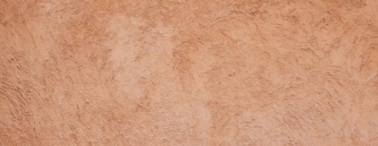
One of the most durable exteriors down through the ages has been a lime, sand and water paste called stucco. This coating pretty well retained this mixture until the invention of Portland cement in the late 1800's which saw the “cooking†of the lie in kilns to make the resulting cement harder. In fact, stucco siding could well be the very first exterior known to man. Stucco mixes are available at the building supply store but most stucco contractors make it from scratch using three parts sand, to one part Portland cement and a small amount of hydrated lime.
Stucco on a Home
Like its indoor cousin, plaster, stucco needs to have a rough finish or lath to grab onto otherwise it might fall off in time. Plasterers used to use wooden laths which were installed perpendicularly to the vertical wall studs. Outside, stucco contractors use a lath made of a zinc-coated, woven-wire mesh which allow the stucco paste to “key†or become embedded into the spaces. In most cases stucco can go right over concrete without a lath but when the exterior is wood the wire mesh is used and kept away from the house by about 1/4â€. The house is sheathed with plywood or oriented strand board, then tar paper or house wrap is applied followed by the lath. In some cases wooden lathes are attached to the exterior after the tar paper, or damp-proof membrane, has been installed. This gives any moisture getting in behind a larger channel to run down behind the stucco.
Stucco is usually applied in three layers but some contractors will scrimp and only use two layers. In the three-layered system the first one, which is keyed into the lath, is called the “scratch†coat. This is usually 3/8â€, or 10mm, thick and is scratched with a broom to form keys in order to hold the second coat. The second coat is called the “brown coat†and is also 3/8†thick. This layer sets the surface up for the final or finished coat which give the stucco its appearance. Stucco is easy to color by mixing a dye in the final coat but a curing period of six weeks should be allowed for the stucco before a paint job. Stucco on homes can last well over a hundred years in the right conditions and small dents and cracks on stucco are easy to repair.
How to Stucco to a Brick Surface
Many homeowners are tired of their brick facing and will apply stucco to change the look. In this case they do not need any lath but here are a few pointers before starting.
- Clean: Pressure wash the surface to get rid of mold, mildew, dirt and other impurities, especially in the mortar. Use a heavy water pressure to dislodge any loose mortar pieces.
- Chisel: To get a good key for the stucco take a masons chisel and carve out some of the mortar joints. Scoring the bricks will also help key the stucco.
- Wet: Before starting dampen the bricks and mortar so that their dryness does not suck the moisture from the stucco and cause it to dry too fast.
- Pushing Stucco: Using a trowel push the scratch coat into the mortar joints first to get a key and then over the surface of the brick.
- Scratch: When the scratch coat has been allowed to dry for two hours score the surface with crossing diagonal marks. This will provide a better keying than just using a broom.
- Drying: Let this harden for 24 - 36 hours but don't let it dry out.
Application Tips
- Mix only enough stucco that can be used up in an average of 1 ½ hours. This time may vary depending on the weather conditions. If it is hot then cut the time down.
- For colored surfaces the final mixture will be dyed but be careful to use the exact ratios or else the home may look spotty.
- Over-mixing will cause the stucco to dry out to quickly when applied. This is caused by air getting in so keep the mixing time to around 10 minutes after the water is added.
- If wooden laths are being used make sure they are soaked with water before applying stucco or else the dry wood will suck the water from the stucco making it dry too fast.
- Have a bucket with clean water handy to dunk the trowel. This will keep bits of stucco from hardening and also periodically put water on the surface.
- Drying too quickly causes cracking so avoid applying stucco in direct sunlight. In addition, keep the surface moist for between 48 and 72 hours.
- The coldest temperature for stucco application is 5 degrees Celsius or 40 degrees Fahrenheit. And colder and frost could form and crack the surface.
- Stucco is hard on plants and other surfaces during installation because it dries into a rock-hard material. Cover the ground and shrubs around the whole area before starting.
- Seal around windows and doors being careful to adjust the flashing. This is where water may get behind the stucco so be careful here.
Stuccoing is not a job for the faint of heart. It takes a lot of patience and a keen eye. For more information on how you can get a professional to do the job contact our Contractors Directory or post your project on line at TrustedPros.ca and one will contact you.
Posted by: TrustedPros




